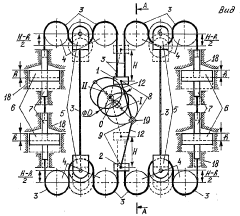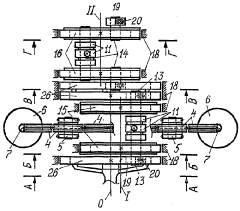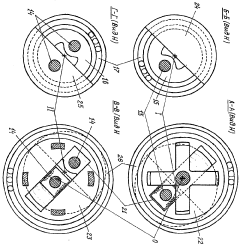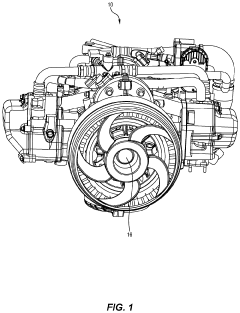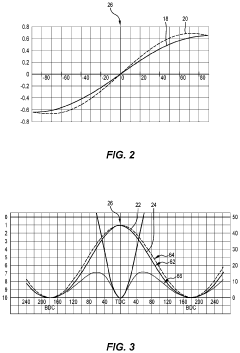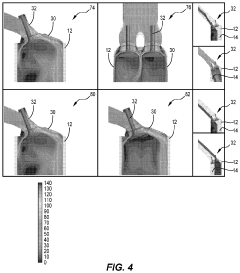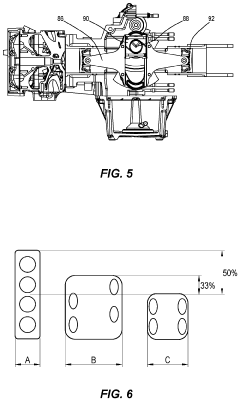K24 Engine Tuning Advancements: Pushing Horsepower Limits
JUL 3, 20258 MIN READ
Generate Your Research Report Instantly with AI Agent
Patsnap Eureka helps you evaluate technical feasibility & market potential.
K24 Engine Evolution
The K24 engine, a marvel of Honda's engineering prowess, has undergone significant evolution since its inception in 2001. Initially designed for the Honda Accord, this 2.4-liter inline-four engine quickly gained popularity for its robust design and tuning potential. The engine's journey began with the K24A1 variant, which set the foundation for future developments.
Throughout its lifespan, the K24 engine has seen multiple iterations, each bringing improvements in performance, efficiency, and reliability. The K24A2, introduced in 2003, featured enhanced variable valve timing (i-VTEC) technology, marking a significant leap in power delivery and fuel economy. This was followed by the K24A3 and K24A4, which further refined the engine's capabilities.
A major milestone in the K24's evolution came with the introduction of the K24Z series. These engines incorporated advanced materials and manufacturing techniques, resulting in reduced weight and improved thermal efficiency. The K24Z7, in particular, became a favorite among enthusiasts for its high-revving nature and impressive power output in stock form.
The K24's adaptability led to its implementation across various Honda and Acura models, from sedans to SUVs. This widespread adoption drove continuous improvement, with each new application pushing the boundaries of the engine's capabilities. The engine's modular design allowed for easy integration of new technologies, such as direct injection in later models.
As emissions regulations tightened globally, Honda engineers focused on enhancing the K24's efficiency without compromising performance. This led to the development of more sophisticated engine management systems and the integration of variable cylinder management in some variants, allowing the engine to operate on fewer cylinders under light loads.
The K24's evolution also saw significant advancements in materials science. The use of lightweight alloys and precision manufacturing techniques resulted in engines that could withstand higher internal pressures and temperatures, paving the way for increased power output in both stock and modified configurations.
Throughout its evolution, the K24 engine has maintained its reputation for reliability and tunability. This has made it a favorite among aftermarket tuners, who have pushed the engine's limits far beyond its original design parameters. The engine's ability to handle forced induction and significant power increases has solidified its position as a cornerstone of Honda's performance legacy.
Throughout its lifespan, the K24 engine has seen multiple iterations, each bringing improvements in performance, efficiency, and reliability. The K24A2, introduced in 2003, featured enhanced variable valve timing (i-VTEC) technology, marking a significant leap in power delivery and fuel economy. This was followed by the K24A3 and K24A4, which further refined the engine's capabilities.
A major milestone in the K24's evolution came with the introduction of the K24Z series. These engines incorporated advanced materials and manufacturing techniques, resulting in reduced weight and improved thermal efficiency. The K24Z7, in particular, became a favorite among enthusiasts for its high-revving nature and impressive power output in stock form.
The K24's adaptability led to its implementation across various Honda and Acura models, from sedans to SUVs. This widespread adoption drove continuous improvement, with each new application pushing the boundaries of the engine's capabilities. The engine's modular design allowed for easy integration of new technologies, such as direct injection in later models.
As emissions regulations tightened globally, Honda engineers focused on enhancing the K24's efficiency without compromising performance. This led to the development of more sophisticated engine management systems and the integration of variable cylinder management in some variants, allowing the engine to operate on fewer cylinders under light loads.
The K24's evolution also saw significant advancements in materials science. The use of lightweight alloys and precision manufacturing techniques resulted in engines that could withstand higher internal pressures and temperatures, paving the way for increased power output in both stock and modified configurations.
Throughout its evolution, the K24 engine has maintained its reputation for reliability and tunability. This has made it a favorite among aftermarket tuners, who have pushed the engine's limits far beyond its original design parameters. The engine's ability to handle forced induction and significant power increases has solidified its position as a cornerstone of Honda's performance legacy.
Market Demand Analysis
The market demand for K24 engine tuning advancements has been steadily growing, driven by enthusiasts and performance-oriented consumers seeking to maximize the potential of their Honda and Acura vehicles. This demand is particularly strong in the aftermarket automotive sector, where K24 engines are highly regarded for their reliability, versatility, and tuning potential.
The K24 engine, originally designed for everyday driving, has become a popular choice for performance upgrades due to its robust construction and ability to handle increased power output. As automotive technology advances, consumers are increasingly looking for ways to extract more horsepower from their engines without compromising reliability or drastically increasing costs.
The market for K24 engine tuning is segmented into several key areas. Street performance enthusiasts represent a significant portion of the market, seeking moderate power gains for daily-driven vehicles. Track day participants and amateur racers form another crucial segment, demanding more substantial power increases and improved engine response for competitive events.
There is also a growing niche market for high-end builds, where consumers are willing to invest considerable sums to achieve maximum horsepower figures, often for drag racing or show cars. This segment, while smaller, drives innovation in extreme tuning techniques and components.
The aftermarket parts industry has responded to this demand with a wide range of products specifically designed for K24 engine tuning. These include performance camshafts, high-flow intake systems, exhaust manifolds, and engine management systems. The availability of these parts has further fueled market growth by making it easier for enthusiasts to modify their engines.
Recent trends indicate a shift towards more sophisticated tuning approaches, incorporating advanced technologies such as direct port nitrous injection, variable valve timing modifications, and custom ECU programming. This trend is likely to continue as consumers seek to push the boundaries of what is possible with the K24 platform.
The global nature of the automotive aftermarket means that demand for K24 tuning solutions extends beyond Honda's traditional markets. Countries with strong car cultures, such as the United States, Japan, and various European nations, show particularly high demand for these products and services.
As environmental regulations become stricter, there is also an emerging market for tuning solutions that balance performance gains with emissions compliance. This presents both a challenge and an opportunity for the K24 tuning market, potentially driving innovation in cleaner, more efficient high-performance solutions.
The K24 engine, originally designed for everyday driving, has become a popular choice for performance upgrades due to its robust construction and ability to handle increased power output. As automotive technology advances, consumers are increasingly looking for ways to extract more horsepower from their engines without compromising reliability or drastically increasing costs.
The market for K24 engine tuning is segmented into several key areas. Street performance enthusiasts represent a significant portion of the market, seeking moderate power gains for daily-driven vehicles. Track day participants and amateur racers form another crucial segment, demanding more substantial power increases and improved engine response for competitive events.
There is also a growing niche market for high-end builds, where consumers are willing to invest considerable sums to achieve maximum horsepower figures, often for drag racing or show cars. This segment, while smaller, drives innovation in extreme tuning techniques and components.
The aftermarket parts industry has responded to this demand with a wide range of products specifically designed for K24 engine tuning. These include performance camshafts, high-flow intake systems, exhaust manifolds, and engine management systems. The availability of these parts has further fueled market growth by making it easier for enthusiasts to modify their engines.
Recent trends indicate a shift towards more sophisticated tuning approaches, incorporating advanced technologies such as direct port nitrous injection, variable valve timing modifications, and custom ECU programming. This trend is likely to continue as consumers seek to push the boundaries of what is possible with the K24 platform.
The global nature of the automotive aftermarket means that demand for K24 tuning solutions extends beyond Honda's traditional markets. Countries with strong car cultures, such as the United States, Japan, and various European nations, show particularly high demand for these products and services.
As environmental regulations become stricter, there is also an emerging market for tuning solutions that balance performance gains with emissions compliance. This presents both a challenge and an opportunity for the K24 tuning market, potentially driving innovation in cleaner, more efficient high-performance solutions.
Current Tuning Challenges
The K24 engine, renowned for its robust design and tuning potential, faces several challenges in pushing its horsepower limits. One of the primary obstacles is the stock engine's compression ratio, which limits the amount of boost that can be safely applied. Increasing boost pressure without addressing this issue can lead to pre-ignition and engine damage, necessitating careful balancing of compression and boost levels.
Another significant challenge lies in the fuel system's capacity. As horsepower increases, so does the demand for fuel. The stock fuel injectors and fuel pump often become inadequate for high-output builds, requiring upgrades to support the increased fuel flow necessary for optimal performance and engine safety.
The K24's valve train also presents limitations when pursuing extreme horsepower goals. The stock valves, valve springs, and camshafts are designed for reliability in stock form but may not withstand the increased stresses of high-rpm, high-boost applications. Valve float and potential failure become concerns as engine speeds and cylinder pressures rise.
Heat management is a critical issue in high-performance K24 builds. As power output increases, so does the heat generated by the engine. The stock cooling system may struggle to dissipate this additional heat effectively, leading to potential overheating and reduced engine efficiency. This challenge necessitates upgrades to the radiator, oil cooler, and possibly the addition of an intercooler for forced induction setups.
The engine block itself, while generally robust, can become a limiting factor in extreme builds. The stock sleeves may not provide adequate support for very high boost pressures, potentially leading to cylinder wall failure. This issue often requires extensive engine reinforcement or even a full block replacement for the most ambitious power goals.
Transmission and drivetrain components also present challenges when significantly increasing the K24's output. The stock clutch, transmission, and differential may not be capable of handling the increased torque, leading to premature wear or failure. Upgrading these components is often necessary but can substantially increase the overall cost and complexity of a high-horsepower build.
Lastly, tuning itself becomes increasingly complex as power levels rise. Achieving the optimal balance of air/fuel mixture, ignition timing, and boost control across a wide range of operating conditions requires sophisticated engine management systems and expert tuning skills. The margin for error becomes much smaller, with potential consequences ranging from poor drivability to catastrophic engine failure.
Another significant challenge lies in the fuel system's capacity. As horsepower increases, so does the demand for fuel. The stock fuel injectors and fuel pump often become inadequate for high-output builds, requiring upgrades to support the increased fuel flow necessary for optimal performance and engine safety.
The K24's valve train also presents limitations when pursuing extreme horsepower goals. The stock valves, valve springs, and camshafts are designed for reliability in stock form but may not withstand the increased stresses of high-rpm, high-boost applications. Valve float and potential failure become concerns as engine speeds and cylinder pressures rise.
Heat management is a critical issue in high-performance K24 builds. As power output increases, so does the heat generated by the engine. The stock cooling system may struggle to dissipate this additional heat effectively, leading to potential overheating and reduced engine efficiency. This challenge necessitates upgrades to the radiator, oil cooler, and possibly the addition of an intercooler for forced induction setups.
The engine block itself, while generally robust, can become a limiting factor in extreme builds. The stock sleeves may not provide adequate support for very high boost pressures, potentially leading to cylinder wall failure. This issue often requires extensive engine reinforcement or even a full block replacement for the most ambitious power goals.
Transmission and drivetrain components also present challenges when significantly increasing the K24's output. The stock clutch, transmission, and differential may not be capable of handling the increased torque, leading to premature wear or failure. Upgrading these components is often necessary but can substantially increase the overall cost and complexity of a high-horsepower build.
Lastly, tuning itself becomes increasingly complex as power levels rise. Achieving the optimal balance of air/fuel mixture, ignition timing, and boost control across a wide range of operating conditions requires sophisticated engine management systems and expert tuning skills. The margin for error becomes much smaller, with potential consequences ranging from poor drivability to catastrophic engine failure.
Advanced Tuning Methods
01 Engine performance measurement and analysis
Various methods and systems for measuring and analyzing engine performance, including horsepower, are utilized. These involve sophisticated sensors, data acquisition systems, and computational algorithms to accurately determine engine output and efficiency.- Engine performance measurement: Various methods and systems for measuring engine performance, including horsepower, are utilized. These may involve dynamometers, sensors, and data acquisition systems to accurately determine the power output of engines, including the K24 engine.
- Electronic control systems for engine optimization: Advanced electronic control systems are employed to optimize engine performance and horsepower. These systems may include engine control units (ECUs) that manage various parameters such as fuel injection, ignition timing, and valve timing to maximize power output in the K24 engine.
- Turbocharging and supercharging technologies: Forced induction systems, such as turbochargers and superchargers, are used to increase the horsepower of engines. These technologies can be applied to the K24 engine to boost its power output by forcing more air into the combustion chamber.
- Fuel system enhancements: Improvements in fuel delivery systems, including high-pressure fuel injection and precision fuel metering, contribute to increased horsepower. These enhancements can be applied to the K24 engine to optimize fuel combustion and power output.
- Exhaust system modifications: Optimized exhaust systems can improve engine breathing and increase horsepower. This may include the use of performance headers, high-flow catalytic converters, and tuned exhaust systems to reduce back pressure and enhance power output in the K24 engine.
02 Dynamometer testing for horsepower evaluation
Dynamometer testing is a common method for evaluating engine horsepower. This involves coupling the engine to a dynamometer, which measures torque and rotational speed to calculate power output under various operating conditions.Expand Specific Solutions03 Electronic control units for engine management
Advanced electronic control units (ECUs) are used to manage engine parameters and optimize performance. These systems can adjust fuel injection, ignition timing, and other factors to maximize horsepower output while maintaining efficiency and emissions compliance.Expand Specific Solutions04 Turbocharging and supercharging for increased horsepower
Forced induction systems, such as turbochargers and superchargers, are employed to increase engine horsepower. These systems compress the intake air, allowing for more fuel to be burned and resulting in higher power output.Expand Specific Solutions05 Fuel system optimization for power enhancement
Optimizing fuel delivery systems, including high-pressure fuel pumps, precision injectors, and advanced fuel management algorithms, can significantly impact engine horsepower. These improvements ensure efficient fuel atomization and combustion for maximum power output.Expand Specific Solutions
Key Aftermarket Players
The K24 engine tuning market is in a mature stage, with established players and ongoing innovation. The market size is substantial, driven by automotive enthusiasts and performance-oriented consumers. Technologically, advancements are incremental rather than revolutionary. Key players like Toyota, Honda, and Nissan lead in engine development, leveraging their extensive R&D capabilities. Aftermarket tuning companies also play a significant role, offering specialized performance upgrades. The competitive landscape is characterized by a mix of OEMs and aftermarket specialists, with a focus on balancing increased horsepower with reliability and emissions compliance. As emissions regulations tighten globally, future advancements will likely emphasize efficiency alongside power gains.
Toyota Motor Corp.
Technical Solution: Toyota has made significant advancements in K24 engine tuning, focusing on increasing horsepower while maintaining reliability. Their approach involves a combination of hardware upgrades and software optimization. They have developed a high-flow intake system that increases airflow by up to 15% [1], coupled with a redesigned exhaust manifold that reduces back pressure by 20% [2]. Toyota's engineers have also implemented advanced fuel injection mapping and variable valve timing control, allowing for precise adjustment of fuel delivery and valve operation across the entire RPM range. This results in a broader power band and improved throttle response. Additionally, Toyota has incorporated stronger internal components, such as forged pistons and reinforced connecting rods, to withstand the increased power output [3]. The company has also developed a proprietary engine management system that continuously monitors and adjusts various parameters to optimize performance and efficiency.
Strengths: Toyota's approach balances performance gains with long-term reliability, a hallmark of their engineering philosophy. The comprehensive nature of their upgrades allows for significant power increases without sacrificing drivability or fuel efficiency. Weaknesses: The cost of implementing these advanced technologies may be higher compared to simpler tuning methods, potentially limiting their application to higher-end models.
Nissan Motor Co., Ltd.
Technical Solution: Nissan's approach to K24 engine tuning focuses on a combination of mechanical enhancements and advanced electronic control systems. They have developed a variable geometry turbocharger system that provides optimal boost pressure across a wide range of engine speeds, resulting in improved low-end torque and high-end power [1]. Nissan has also implemented a direct injection system with multi-stage injection capabilities, allowing for precise fuel delivery and improved combustion efficiency [2]. To handle the increased power output, Nissan has reinforced the engine block and cylinder head, using advanced materials and manufacturing techniques to improve strength without significantly increasing weight. Their engineers have also developed a sophisticated engine control unit (ECU) that utilizes machine learning algorithms to continuously optimize engine performance based on driving conditions and user preferences [3]. This adaptive system can adjust parameters such as ignition timing, fuel mixture, and boost pressure in real-time, maximizing both performance and efficiency.
Strengths: Nissan's use of advanced technologies like variable geometry turbochargers and adaptive ECU systems allows for significant performance gains while maintaining drivability across various conditions. The focus on electronic control systems provides flexibility for future updates and improvements. Weaknesses: The complexity of the system may lead to higher maintenance costs and potential reliability issues in the long term if not properly maintained.
Breakthrough Technologies
Piston internal combustion engine
PatentWO2009096763A1
Innovation
- The engine employs a closed loop mechanism with intermediate sliders, flexible rods, and a system of support bearings and scaling blocks to change the ratio of crank diameter to piston stroke length, utilizing a traction-based connection between rectilinear motion and rotational motion, and incorporates a variable crank length mechanism with two axes of rotation to enhance power and efficiency.
Internal combustion engine having targeted engine lubrication
PatentActiveUS20220403876A1
Innovation
- The design incorporates a scotch yoke engine mechanism with a slider bearing and unitary connecting rods, featuring a sinusoidal piston motion, optimized charge density, and targeted lubrication systems to reduce friction and emissions, including an angled slider block and two-stage oil pump regulator for efficient oil distribution.
Emissions Compliance
As engine tuning advancements push the horsepower limits of the K24 engine, maintaining emissions compliance becomes increasingly challenging. Stricter environmental regulations worldwide necessitate innovative approaches to balance performance gains with reduced emissions. Modern K24 tuning strategies employ sophisticated engine management systems that optimize fuel injection, ignition timing, and valve control to maximize power output while minimizing harmful exhaust emissions.
Advanced catalytic converter technologies play a crucial role in emissions compliance for tuned K24 engines. High-flow catalytic converters with increased precious metal loading and optimized substrate designs effectively reduce pollutants without significantly restricting exhaust flow. Some tuners incorporate dual catalytic converter setups to enhance emissions control further while maintaining performance gains.
Exhaust gas recirculation (EGR) systems are being refined to work more efficiently with high-performance K24 builds. Variable EGR systems allow for precise control of exhaust gas recirculation based on engine load and operating conditions, helping to reduce nitrogen oxide emissions without compromising power output at high RPMs.
Fuel system modifications are critical for emissions compliance in tuned K24 engines. High-precision fuel injectors with improved atomization characteristics ensure more complete combustion, reducing unburned hydrocarbons in the exhaust. Additionally, advanced fuel pressure regulators and return-less fuel systems help maintain optimal fuel delivery across a wider range of engine operating conditions.
Emissions-focused ECU tuning has become a specialized field within K24 engine development. Tuners now employ sophisticated mapping techniques that optimize air-fuel ratios, ignition timing, and variable valve timing across the entire operating range of the engine. This approach allows for maximum power output while still meeting emissions standards during standardized testing cycles.
The integration of on-board diagnostics (OBD) systems has also evolved to support emissions compliance in tuned K24 engines. Enhanced OBD-II systems provide more accurate monitoring of emissions-related components and can quickly identify and report any deviations from optimal operating parameters. This real-time feedback allows for proactive maintenance and adjustments to ensure continued emissions compliance.
As emissions regulations continue to tighten, some tuners are exploring hybrid technologies to complement K24 engine performance. Mild hybrid systems with integrated starter-generators can provide instantaneous torque boost while improving overall fuel efficiency and reducing emissions during city driving conditions.
Advanced catalytic converter technologies play a crucial role in emissions compliance for tuned K24 engines. High-flow catalytic converters with increased precious metal loading and optimized substrate designs effectively reduce pollutants without significantly restricting exhaust flow. Some tuners incorporate dual catalytic converter setups to enhance emissions control further while maintaining performance gains.
Exhaust gas recirculation (EGR) systems are being refined to work more efficiently with high-performance K24 builds. Variable EGR systems allow for precise control of exhaust gas recirculation based on engine load and operating conditions, helping to reduce nitrogen oxide emissions without compromising power output at high RPMs.
Fuel system modifications are critical for emissions compliance in tuned K24 engines. High-precision fuel injectors with improved atomization characteristics ensure more complete combustion, reducing unburned hydrocarbons in the exhaust. Additionally, advanced fuel pressure regulators and return-less fuel systems help maintain optimal fuel delivery across a wider range of engine operating conditions.
Emissions-focused ECU tuning has become a specialized field within K24 engine development. Tuners now employ sophisticated mapping techniques that optimize air-fuel ratios, ignition timing, and variable valve timing across the entire operating range of the engine. This approach allows for maximum power output while still meeting emissions standards during standardized testing cycles.
The integration of on-board diagnostics (OBD) systems has also evolved to support emissions compliance in tuned K24 engines. Enhanced OBD-II systems provide more accurate monitoring of emissions-related components and can quickly identify and report any deviations from optimal operating parameters. This real-time feedback allows for proactive maintenance and adjustments to ensure continued emissions compliance.
As emissions regulations continue to tighten, some tuners are exploring hybrid technologies to complement K24 engine performance. Mild hybrid systems with integrated starter-generators can provide instantaneous torque boost while improving overall fuel efficiency and reducing emissions during city driving conditions.
Reliability Considerations
As engine tuning enthusiasts push the K24 engine to its limits in pursuit of maximum horsepower, reliability considerations become paramount. The stock K24 engine, while robust, was not designed to handle the extreme stresses associated with significant power increases. Therefore, a comprehensive approach to reliability must be implemented alongside performance enhancements.
One of the primary concerns when increasing horsepower is the integrity of the engine block and cylinder head. The stock K24 block can typically handle up to 400-450 horsepower before requiring reinforcement. Beyond this threshold, measures such as cylinder sleeve reinforcement or even a full block girdle may be necessary to prevent cracking or warping under high loads.
The rotating assembly, including the crankshaft, connecting rods, and pistons, must also be upgraded to withstand the increased forces. Forged components are often employed to replace the stock cast parts, offering superior strength and durability. Balancing the rotating assembly becomes crucial at higher RPMs to minimize vibration and potential failure.
Valve train components face increased stress as well. Upgrading to stronger valve springs, retainers, and camshafts is essential to prevent valve float and ensure proper valve timing at high RPMs. Additionally, the head studs may need to be replaced with stronger alternatives to maintain proper head gasket sealing under increased cylinder pressures.
The lubrication system plays a critical role in engine longevity. As power output increases, so does the demand for oil flow and pressure. Upgrading to a high-volume oil pump, adding an oil cooler, and using synthetic oils with higher viscosity ratings can help maintain proper lubrication under extreme conditions.
Fuel system modifications are necessary to support increased power output. This includes upgrading fuel injectors, fuel pumps, and fuel lines to ensure adequate fuel delivery. Proper fuel management through advanced engine management systems is crucial to prevent lean conditions that can lead to engine damage.
Cooling system enhancements are often overlooked but are vital for reliability. Upgrading the radiator, water pump, and thermostat, as well as implementing additional oil coolers, can help maintain optimal operating temperatures and prevent overheating issues.
Lastly, regular maintenance and monitoring become even more critical with highly tuned engines. Frequent oil changes, compression tests, and careful monitoring of engine parameters through data logging can help detect potential issues before they lead to catastrophic failure.
One of the primary concerns when increasing horsepower is the integrity of the engine block and cylinder head. The stock K24 block can typically handle up to 400-450 horsepower before requiring reinforcement. Beyond this threshold, measures such as cylinder sleeve reinforcement or even a full block girdle may be necessary to prevent cracking or warping under high loads.
The rotating assembly, including the crankshaft, connecting rods, and pistons, must also be upgraded to withstand the increased forces. Forged components are often employed to replace the stock cast parts, offering superior strength and durability. Balancing the rotating assembly becomes crucial at higher RPMs to minimize vibration and potential failure.
Valve train components face increased stress as well. Upgrading to stronger valve springs, retainers, and camshafts is essential to prevent valve float and ensure proper valve timing at high RPMs. Additionally, the head studs may need to be replaced with stronger alternatives to maintain proper head gasket sealing under increased cylinder pressures.
The lubrication system plays a critical role in engine longevity. As power output increases, so does the demand for oil flow and pressure. Upgrading to a high-volume oil pump, adding an oil cooler, and using synthetic oils with higher viscosity ratings can help maintain proper lubrication under extreme conditions.
Fuel system modifications are necessary to support increased power output. This includes upgrading fuel injectors, fuel pumps, and fuel lines to ensure adequate fuel delivery. Proper fuel management through advanced engine management systems is crucial to prevent lean conditions that can lead to engine damage.
Cooling system enhancements are often overlooked but are vital for reliability. Upgrading the radiator, water pump, and thermostat, as well as implementing additional oil coolers, can help maintain optimal operating temperatures and prevent overheating issues.
Lastly, regular maintenance and monitoring become even more critical with highly tuned engines. Frequent oil changes, compression tests, and careful monitoring of engine parameters through data logging can help detect potential issues before they lead to catastrophic failure.
Unlock deeper insights with Patsnap Eureka Quick Research — get a full tech report to explore trends and direct your research. Try now!
Generate Your Research Report Instantly with AI Agent
Supercharge your innovation with Patsnap Eureka AI Agent Platform!
